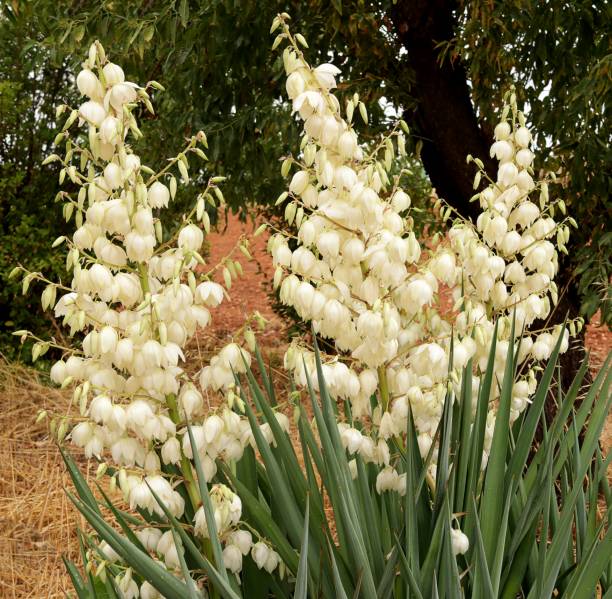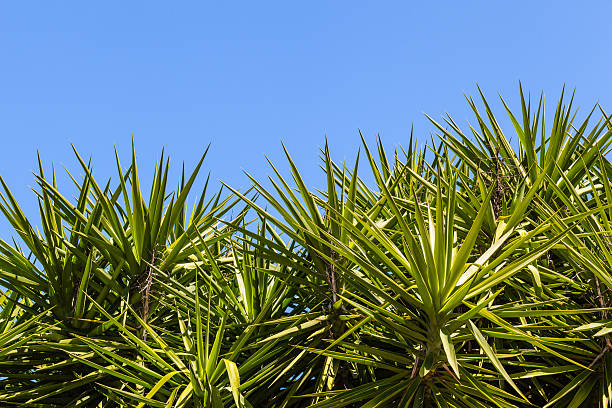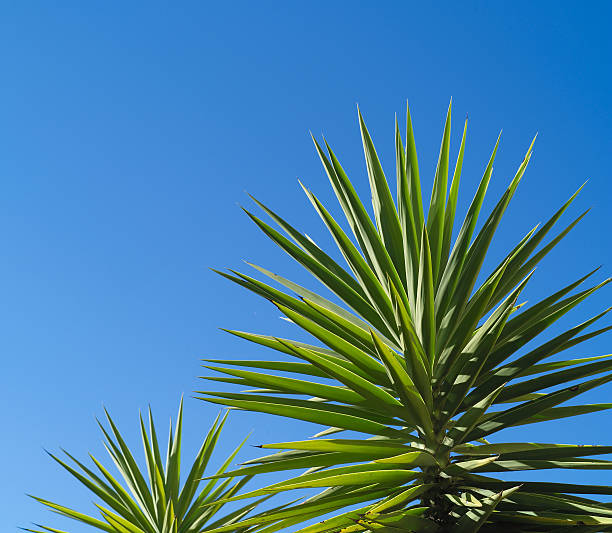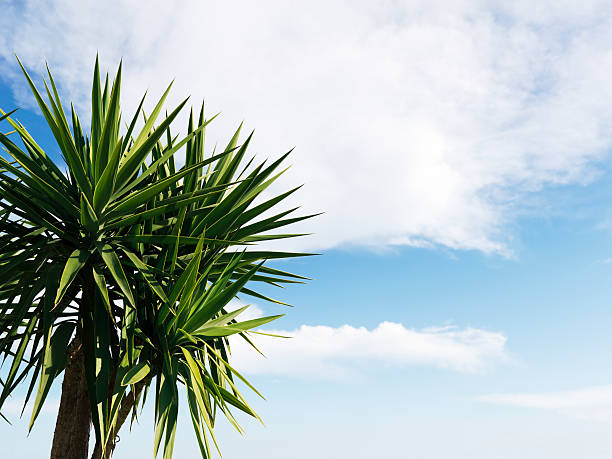
Houseplants are a great way to improve air quality, and Yucca Elephantipes is one of the best plants for filtering toxins. This care guide will teach you everything you need to know about keeping an Alocasia healthy in your home.
What is A Yucca Elephantipes (Spineless Yucca)?
Yucca elephantipes, also known as the spineless yucca, is a beautiful houseplant that is relatively easy to care for. If you are looking for a plant that will add some life to your home without being too fussy, the spineless yucca could be a good option! Keep reading to learn all about how to care for a spineless yucca.
One of the most appealing things about the spineless yucca is its low maintenance requirements. This plant is tolerant of heat and drought, so it can be an excellent choice for those who do not have a green thumb!
The spineless yucca also does not require a lot of light, so that it can be placed in a room with little natural light. water your yucca once every week or two; let the soil dry out completely between watering.
The spineless yucca can reach heights of up to 10 feet, so it is essential to choose a large pot to accommodate its eventual size. When repotting, be sure to use a well-draining potting mix. This plant does not like to sit in wet soil, which can lead to root rot.
If you want your spineless yucca to flower, you must provide it with plenty of bright light. However, the flowers are not particularly showy and have a strong scent that some people find unpleasant.
If you want your plant to bloom indoors, you may want to consider growing it in an outdoor area during the summer months to get the bright light it needs.
The spineless yucca (yucca elephantipes) is a beautiful houseplant that is relatively easy to care for. If you want something that will add some life to your home without being too fussy, the spineless yucca could be a good option! Just be sure to give it plenty of room to grow—this plant can reach heights of up 10 feet!
Main Features of the Yucca Elephantipes (Spineless Yucca) Plant

The Yucca elephantipes, known as the spineless yucca, is a fast-growing evergreen succulent. Native to Central America, this striking ornamental plant is widely cultivated as a decorative houseplant or landscaping accent in warm climates worldwide.
With its impressive height, sharp leaves, and ability to thrive in drought conditions, it’s no wonder this plant has become such a popular choice for landscapers and homeowners alike. Given time and proper care, a mature Yucca elephantipes can grow over 20 feet tall with a 12-foot spread! Here are some of its most notable features:
Striking Foliage
One of the most distinguishing features of the Yucca elephantipes is its dramatic foliage. The leaves are long (up to 3 feet), thin, and sharply pointed with serrated margins. They are arranged in a rosette pattern and emerge from a thick, woody trunk. This plant is so popular because it doesn’t require much maintenance; the sharp leaves dissuade most would-be pests from residence.
Impressive Height
As mentioned before, with proper care and time, a Yucca elephantipes can grow upwards of 20 feet tall! This makes it an ideal tree-like accent for any landscape design. When used as a houseplant, give it plenty of vertical space to grow; roomier pots or hanging baskets are best.
Drought Tolerant
Due to its native habitat of dry, rocky hillsides in Central America, the Yucca elephantipes is remarkably tolerant of drought conditions. Once established, it will need minimal supplemental watering; just ensure the soil has thoroughly dried out before watering again. This attribute also makes it an excellent choice for xeriscaping or water-wise gardens.
If you’re looking for an attractive, low-maintenance accent plant for your home or landscape design, look no further than the Yucca elephantipes! This fast-growing evergreen succulent is native to Central America but can be found in gardens and homes worldwide.
With its impressive height, striking foliage, and resistance to drought conditions, it’s easy to see why this plant has become such a popular choice. Just be sure to give it plenty of space to grow and water only when the soil is arid; too much water can kill this tough little plant!
Flowers/Bloom Time
The flowers of the Yucca elephantipes are white or cream-colored and grow in clusters on long stalks. They typically bloom in the spring or summer but can appear at other times depending on the climate. While the flowers are not particularly showy, they have a strong scent that some people find unpleasant.
Toxicity
All parts of the Yucca elephantipes plant are considered toxic if ingested by humans or animals. Symptoms of toxicity include nausea, vomiting, and diarrhea. Contact your veterinarian immediately if you suspect your pet has eaten any part of this plant.
How to Care for the Spineless Yucca?

The spineless yucca is a type of Yucca that doesn’t have the usual sharp leaves. It’s a popular houseplant because it’s low-maintenance and can prosper indoors with little sunlight. Although the spineless yucca is a hardy plant, it’s still important to take special care of it to ensure it thrives. Here are a few tips on how to care for your spineless yucca.
Watering Your Spineless Yucca
One of the most important things you can do for your spineless yucca is to water it regularly. Allow the top 2 inches of soil to dry out in between waterings.
When you water your yucca, make sure to give it a good soaking so that it reaches the roots. Be careful not to overwater your plant, as this can cause root rot. If you’re unsure whether your plant needs watering, stick your finger into the soil. If it feels dry, it’s time to give your plant a drink!
Giving Your Spineless Yucca Light
While spineless yuccas don’t require a lot of light, they need bright, indirect sunlight daily. If you notice that your plant is starting to stretch out or that the leaves are turning yellow, this is a sign that it’s not getting enough light.
Move your plant to a brighter spot and see if there’s any improvement. You may also need to supplement with artificial light if there isn’t enough natural light available. Growing lamps are inexpensive and easy to find at most home improvement stores.
Fertilizing Your Spineless Yucca
To keep your spineless yucca healthy and happy, fertilize it every month during the spring and summer. Use a balanced fertilizer that’s specifically designed for houseplants.
Reduce fertilization to once every two months during the fall and winter months. It’s also important not to over-fertilize your plant, as this can damage the roots and leave Burn marks on the leaves. Always follow the directions on the fertilizer package carefully.
Pruning Your Spineless Yucca
If you want your spineless yucca to maintain its shape, you’ll need to prune it regularly. Cut off any dead or dying leaves and stems with a sharp pair of scissors or gardening shears.
You can also remove any shoots that are growing in an undesired direction. When pruning your spineless yucca, be sure not to remove more than one-third of the plant at a time. This will help prevent shock and encourage new growth.
With just a little TLC, your spineless yucca will thrive indoors all year! Water it regularly, give it bright indirect sunlight, fertilize it monthly during spring and summer, and prune it as needed to maintain its shape. With proper care, your plants will remain healthy and happy for years!
Humidity and Temperature
All plant life on Earth is affected by prevailing environmental conditions, including humidity and temperature. While it is well known that these factors can impact the growth and development of plants, the specific role that humidity and temperature play in plant health is not always precise. This blog post will take a closer look at the relationship between humidity and temperature in spineless yucca plants. We’ll explore how these two environmental factors affect yucca plants and what steps yucca growers can take to ensure their plants get the right amount of moisture and heat.
How Humidity and Temperature Impact Spineless Yucca Plants

Spineless yucca plants are native to arid desert regions and adapted to survive in hot, dry conditions. However, when grown in humid conditions, spineless yucca plants can suffer from several problems. High humidity levels can cause spineless yucca leaves to develop brown spots or to drop off entirely. In extreme cases, high humidity can lead to fungal growth on the leaves or stems of the plant.
Temperature also plays a role in the health of spineless yuccas. While these plants can tolerate high temperatures, they will not thrive if temperatures drop below 50 degrees Fahrenheit. Spineless yuccas are more susceptible to fungal diseases and pests in more excellent conditions. They may also experience slower growth rates and produce fewer blooms.
To ensure that your spineless yuccas are getting the right amount of humidity and temperature, it is essential to monitor both environmental factors carefully. Use a hygrometer to measure the amount of moisture in the air, and check thermometers to ensure that temperatures are within the ideal range for spineless yuccas.
If necessary, adjust your grow lights or fans to create the desired environment for your plants. By taking these steps, you’ll be helping your spineless yuccas stay healthy and happy!
Spinless yuccas are hardy desert plants that can tolerate high temperatures and low amounts of moisture. However, spineless yuccas can suffer from brown leaf spots, fungal growth, or other problems when grown in humid conditions.
grow lights or fans If you’re increasing spinless yuccas. It’s essential to carefully monitor the humidity and temperature levels in your grow room using a hygrometer and thermometer. Make adjustments as necessary to create an optimal environment for your plants!
How to Propagate the Yucca Plants?

Yucca plants are common houseplants known for their ability to thrive in harsh conditions. While seeds typically propagate them, they can also be propagated by root division. This method is beneficial for producing more mature plants. Here’s a step-by-step guide on propagating yucca plants by root division.
1. Start by finding a healthy mother plant. Choose one that has thick, healthy roots and plenty of new growth.
2. Carefully remove the plant from its pot. Gently loosen the roots so that you can easily access them.
3. Using a sharp knife, cut the root ball into two or three sections, ensuring that each team has at least one or two sets of leaves.
4. replant each section in its pot using a well-draining potting mix. Water the plants well and place them in a bright spot but out of direct sunlight.
5. Keep the soil moist but not soggy until the plants are established, then water them only when the soil is dry to the touch.
Propagating yucca plants by root division is a quick and easy way to produce more plants without starting from seed. It’s also a great way to make mature plants more quickly than starting from seedlings.
Keep in mind that yucca plants need bright light but should be protected from direct sun exposure to prevent scorching of the leaves. They also prefer well-drained soil and should be watered only when the soil is dry to the touch.
With proper care, your propagated yucca plants should thrive and produce new growth in no time!
How to Repot the Yucca Plants?

A yucca plant is a succulent native to hot, dry climates, such as those found in the southwestern United States. Yuccas are low-maintenance plants that require little water and can survive long periods without being watered.
Yuccas can be grown indoors or outdoors and make excellent houseplants. If you have a pot-bound yucca plant, meaning the roots have outgrown the pot, it’s time to repot the plant. Here’s how:
Step One: Choose a new pot that is about two inches wider in diameter than the old pot. Make sure the unique pot has drainage holes in the bottom.
Step Two: Add some rocks or gravel to the bottom of the new pot for drainage.
Step Three: Add enough potting soil to the new pot so that the yucca plant will sit at the same height it did in the old pot.
Step Four: Gently remove the yucca plant from its old pot. Place it in the center of the new pot and backfill it with soil around the edges of the plant. Pat down gently so that there are no air pockets around the roots.
Step Five: Water your yucca plant well and allow it to drain completely. Place in a bright location but out of direct sunlight.
Step Six: Repeat steps one through five every two to three years or as needed.
Repotting a yucca plant is a simple process that should be done every two to three years or as needed. By repotting your yucca plant, you will help ensure that it continues growing and thriving for many years.










